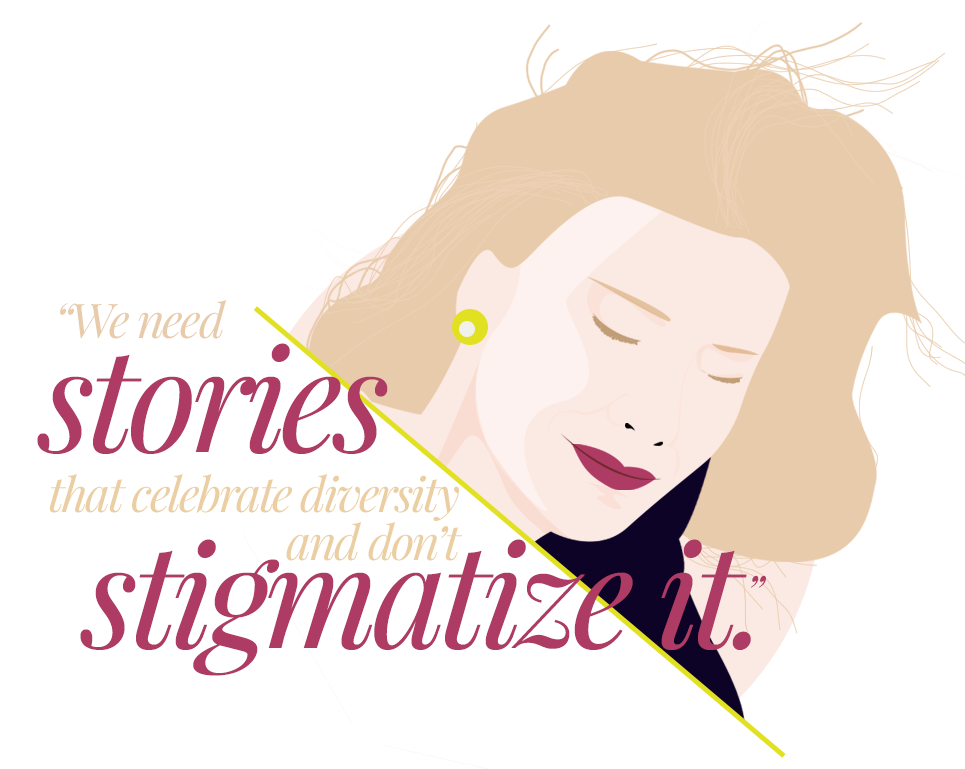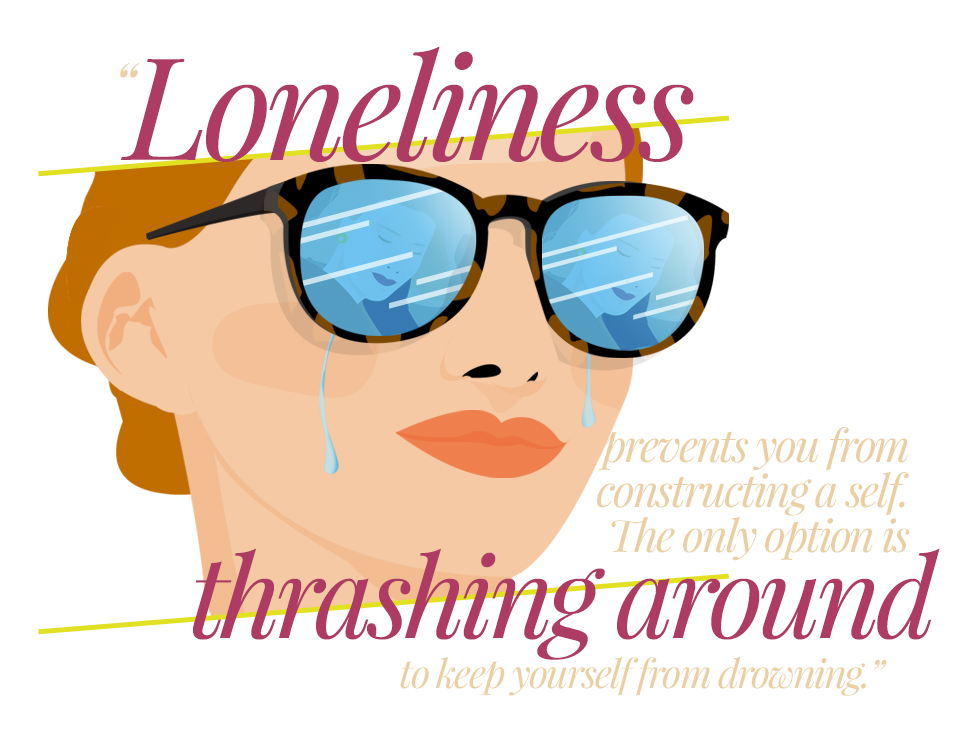One of the worst Sundays of my life was in 1999. I was 14, so my low spirits that morning had nothing to do with a hangover — at least not the alcohol-related kind. I often woke up with this sense of gloom. Later that day, as she did most weekends, my mother took me to a video store so we could rent anything I wanted to watch. I loved the ritual of going there to look for a story that would be about me, something that would speak to me about myself.
I had kept myself from asking why kissing boys didn’t feel the same way for me as it felt for Christina Ricci in Now and Then, even though I was so much like her otherwise.
When you know something inside you doesn’t agree with the world around you, fiction becomes the straw you grasp at to try to understand why — and to understand yourself. Until that Sunday, my lifesavers had been female characters who were mainstream, but closer to the margins of the norm: Princess Leia leading the rebels in a galaxy far, far away, or Geena Davis as Morgan Adams at the helm of a pirate ship in Cutthroat Island. Both lived through a thousand adventures and wielded their own swords against anyone who tried to keep them from following their dreams. Then there was Mary Stuart Masterson in Fried Green Tomatoes, acting like a boy, and later like a man. Her ~friendship~ with Mary-Louise Parker sparked an intense curiosity in me, since it showed a relationship that came quite close to representing my deepest desires.
It was during that Sunday visit to the video store that Hilary Swank, the essential tomboy, with her short hair and pronounced jawline, called to me from the sepia-tinted cover of Boys Don’t Cry. She chose me. I handed the box to my mother, who took it to the cashier, and we went home.
That night my parents went out, and sitting on our couch, I experienced one of the most excruciating instances of hopelessness in my life. I cried for two hours after the credits rolled, and I didn’t have the slightest idea where all my sadness was coming from. This story of a transgender man, filmed in harsh, artificial light, was not, strictly speaking, about me. For years I had been completely shutting out the part of my life that was touched by that movie, just as I had kept myself from asking why kissing boys didn’t feel the same way for me as it felt for Christina Ricci in Now and Then, even though I was so much like her otherwise.

It was then, in my mid-teens, that my existential lifesavers began to deflate at an ever-increasing pace. Indie movies linked being anything other than cisgender and straight with violent death. The socially acceptable models of funny gay people I saw on TV — flawed and stereotyped as they were — were always male. I did not know how to swim in the world as I was; someone had to teach me, and the simple act of staying afloat was beginning to turn into draining work.
I was raised, more or less successfully, to behave like a girl as our society defines it. I learned how boys were supposed to act by watching my older brother. But what happens when you grow out of that pink and blue segregated childhood, and into the age where people expect you to be interested in the opposite sex? What do you do when inside your head, in your dreams, in the imaginary pictures you make up before you go to sleep, happiness means holding hands with or kissing another girl? If nobody else did this, not the people around me or the characters in the books I read, and if my Sunday movies never ended the way my fantasies did, then something must have been wrong. I must have been secretly flawed in some way, though nobody knew it.
Indie movies linked being anything other than cisgender and straight with violent death.
Let’s agree that being a teenager isn’t easy for anyone, not even Regina George or Taylor Swift. But for typical white, heterosexual, Western 15-year-olds, there are manuals and models on every corner. They can turn to fiction to broaden their horizons, or simply construct their identities using everything they see around them, building from the outside in. And if everything goes according to plan, they may later decide to try the process in reverse, questioning the validity of all they’ve been taught to believe. But when you have no cultural images to relate to — and certainly no positive ones — loneliness and agony prevent you from constructing a self. The only option is thrashing around to keep yourself from drowning.
Anesthetized by my teenage habit of avoiding my own feelings, I searched for models of queer life in the only places I knew. Without an internet connection, this meant the library or the video store. Usually the result was the same: tragedy, like in Lost and Delirious, and the death of Willow’s girlfriend Tara in Buffy the Vampire Slayer, which even magic couldn’t prevent. Most gay characters, and TV hosts, looked like caricatures, and they were almost always men. The more flamboyant they were, the less seriously they were treated; sometimes they were even made to look like buffoons.
Was it always going to be that way? Would I be condemned to a sterile existence, never able to live my own life in full color, pressed to escape from who I really was? Nobody put a hand on my shoulder or gave me the comforting hug that would say that everything was going to be all right, that I deserved as much happiness as everyone else.

Luckily, two years after I bawled over Boys Don’t Cry, things changed — and of course, that change came in the form of a movie. It was at the same video store, after the same search through the indie section, and with my mother again paying for the rental. Fucking Åmål — a film about a romantic relationship between two teen girls in small-town Sweden, released in the US as Show Me Love — showed me the light. Seeing characters just like me validated my identity and made me realize that what was happening to me in my small town might be happening to many others in many other places. And even though the road was tough, it had a happy ending. But the most important thing I learned from watching it was that if there was one story like that, there had to be more. Though nobody was sharing them with me, or maybe I was not able to find them, I was now certain that they existed.
My next gulp of air came at 17, at the precise moment my mother connected our house to the internet. Long before Facebook and Instagram, in 2002, there was Fotolog, a photo-sharing platform popular with Spanish speakers. There I found a true community through forums, YouTube links, and personal blogs populated by people much more courageous and daring than I was. The internet became as important to me as my everyday reality — it was my escape route, my oxygen tank. It provided perspective and gave me confidence that one day, the screen I was interacting with would turn into friends made of real flesh.
More than anything else, it was online fanfiction that helped me start truly cementing my present self. The genre draws ridicule to this day despite having generated such mainstream (and toxic) works as Fifty Shades of Grey. This kind of literature — and I wouldn’t think of calling it anything else — does exactly the same thing I did every night when I went to bed and conjured a world of my own, where I could let myself live on the margins of reality and what it had to offer me.
Fanfic transforms what exists into what its audience really needs to read.
Fanfic transforms what exists into what its audience really needs to read, letting readers look for identifying features, for guidance, and for doors that open up new places to explore and experience. Sometimes its authors continue stories that have already been written; other times they create crossovers between different series or transplant characters. As you might expect, my reading centered around the category of fanfiction known as “saffic,” which features lesbians as the main characters. Their sexual orientation may be already established, but if it isn’t, the magic of fiction makes them turn to sapphic love without a second thought. Reading these stories made me think, Hey, I want that! The feeling couldn’t have been more removed from my Sunday afternoon spent crying on the couch.
There was fanfic that mixed characters from video games, like Super Mario Bros. and Zelda, to cater to gamer types. And there was even fanfic with characters from Spain, where I lived. I remember the first time I read one of these stories — it was one of the incredible amount of fanfics written about Silvia and Pepa from Paco's Men, a series that I hadn’t watched and never would, even though I could re-enact any scene centered around the two of them. The geographical proximity of these lesbian characters to my own life was what, at last, brought me toward the reality that I had for some years already been experiencing.
As I grew older, I got out of the habit of reading fanfic. But sometimes I still think about looking up Camren stories, the fics that ship Camila Cabello and Lauren Jauregui from Fifth Harmony. Sometimes I linger over Instagram, looking through posts where fans have tagged the Spanish social media power couple Dulceida and Alba, inventing their own futures for them. I still remember the fanfics that turned Buffy and Faith from Buffy the Vampire Slayer into the hottest couple I had ever seen. Reading them enriched my experience with the series (which I am sure, though it put Willow and Tara together, could not have hinted at a lesbian relationship for the protagonist). There they were: two self-reliant teenagers, fearless leaders saving the world, with the sense of humor that I wanted and needed for myself. And on top of everything, they got it on and were very happy.
In 2016, at the age of 30, 17 years after my first dose of reality in Boys Don’t Cry, I saw a lesbian story with a happy ending on the big screen for the first time. Carol is an adaptation of The Price of Salt, a 1952 novel recognized as the first major queer work of fiction without a tragic ending, for which the author Patricia Highsmith received many letters of thanks. Sixty-four years after the book’s publication, the majority of society is ready to understand that stories don't have to be about male-female couples to be full of passion and inspiration. We are ready to realize that even though heterosexuality is the most common mode of existence, it is not the only one — and certainly not the only way of finding fulfillment as an individual or as a couple. We are ready to see that queer characters should not be caricatures or stereotypes of themselves. We are ready to understand that we need stories that celebrate diversity rather than stigmatizing it, because in small towns (and big cities) around the world, there are still people who are wary of pursuing real-life queer experiences for fear they will bring agonizing results.
What we owe queer young people is more visible, accessible, and normative spaces, more role models they can relate to — role models they can’t find in their schools, in their families, or among friends — to use as guides who can help them learn how to be themselves.
This post was translated from Spanish.
